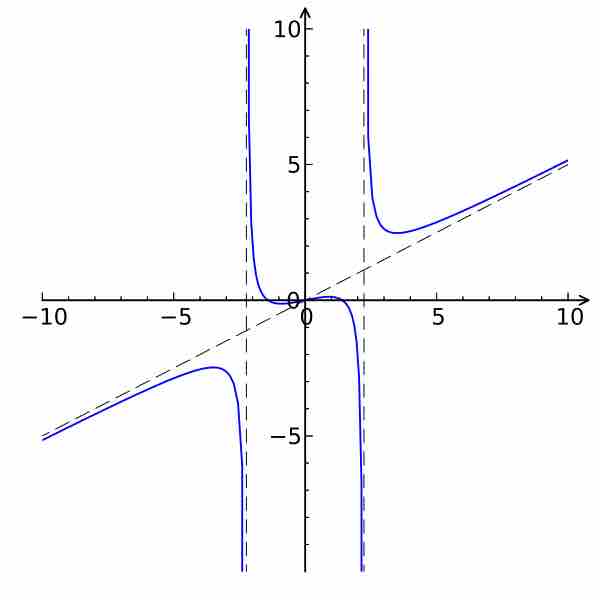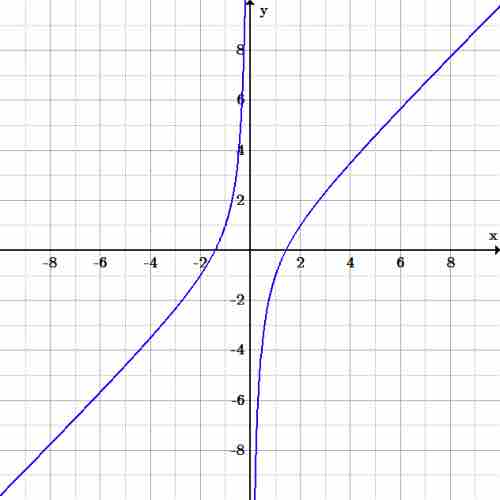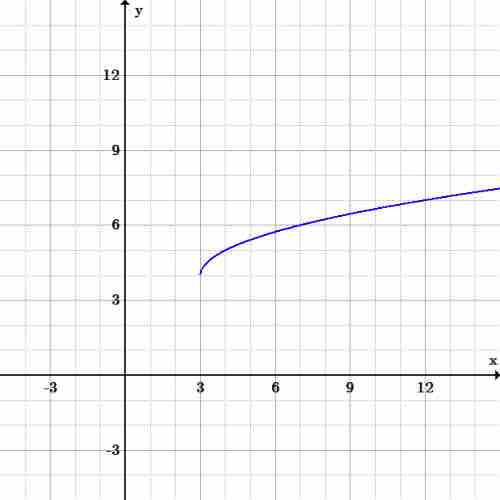Finding Domains of Rational Functions
A rational expression is one which can be written as the ratio of two polynomial functions. Despite being called a rational expression, neither the coefficients of the polynomials nor the values taken by the function are necessarily rational numbers. In the case of one variable,
where
The domain of a rational expression of is the set of all points for which the denominator is not zero. If the denominator of the equation becomes equal to zero, the expression is undefined at that point.
Example 1: What is the domain of the rational function:
To find the domain of a rational function, set the denominator equal to zero and solve. All values of
To solve, divide both sides by
Therefore the domain is the set of all real numbers except the square root of five or negative square root of five.
Notice the graph of the function below. At the values of

Rational function with restricted domain
The graph of the function:
Example 2: What is the domain of the rational function:
$\displaystyle
f(x)= \frac{\left(x^2-2\right)}{x}$
Algebraically, the domain is the set of all real numbers except zero, since the denominator can not equal zero. One way to determine this is to look at it graphically. We can see that the graph is discontinuous at

Rational Function Dividing by $x$
A graph of the equation:
Finding Domains of Radical Functions
The principal square root function

Radical Function
The function
Note that half of the parabola is missing since functions cannot have more than one value at a point, and the square root function is taken to yield a positive value (though
To determine the domain of a radical function algebraically, find the values of
Example 3: What is the domain of the radical function:
$\displaystyle
f(x) = \sqrt {x-3} +4$
Set the radicand greater than or equal to zero and solve for
Therefore

Radical function
The graph of the equation: